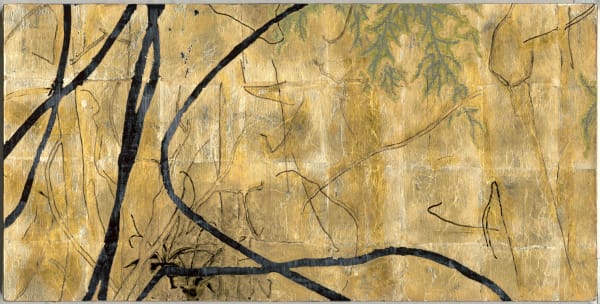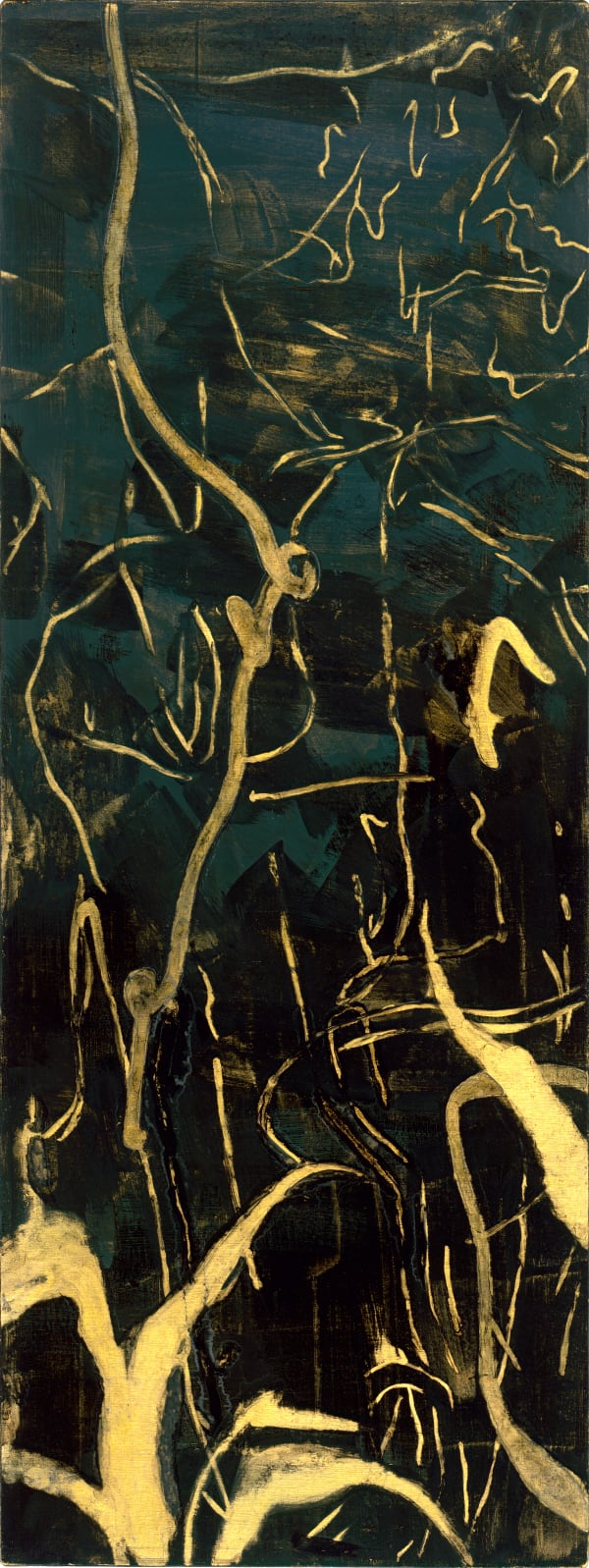b. 1987 in Taoyuan, Taiwan
Ethan Su Huang-Sheng received his master’s degree from Taipei National University of Arts where he established a solid foundation in painting technique—particularly meticulous gongbi-styled painting with mineral pigments on a range of material grounds—and comprehensive understanding of the history of East Asian painting. Su’s ink paintings present us with artistic experiences that engage deeply our formal expectations of traditional Chinese painting yet resonate naturally and instinctually with our visual experience of daily life in our contemporary, digital era. This makes his painting a dialogue between two very different approaches to visuality—one tracing the history of ink painting and its traditional practice, the other exploring first-personal visual experience and its expression in contemporary visual culture. His painting process thus becomes an ongoing exploration of the fundamental meaning of painting itself—and the practice of ink painting more specifically—as reflected in his first-person perceptual and psychological experience of living in the world today. Su currently lives and works in Taipei.
Su’s unique approach to traditional and contemporary visuality is reflected in his adoption of the moving perspective and the shifting treatment of pictorial space in the handscroll format or a horizontal composition. Unlike the linear perspective that prevailed in Western painting during the Renaissance—which employs a single, fixed viewing point in order to achieve an illusionistic space—the moving perspective adopted in East Asian landscape painting allows and invites the viewer’s eye to navigate freely throughout the composition. For a viewer who has a basic understanding of traditional landscape painting, the above treatment of space and perspective will be familiar. What is visually fresh and challenging, however, is the drastic change of time and space achieved through manipulating the viewing distance, so dramatically that a coherent composition contradicts sharply the distorted pictorial space. Among other things, this offers us new perceptual frameworks for interpreting the moving perspective of the East Asian landscape that feel not archaic or formalistic but instinctual and immediate in a world we experience both directly and mediated whether through movies, television programs, or even on our own cell phones whenever taking a photo.
For a young artist like Su, who grew up in the digital era, the abundance and complexity of daily visual experience has become a central impetus in the creation of a contemporary visuality for ink painting. Through accumulation, reflection and transformation, he draws materials from ordinary and trivial objects seen in the quotidian world—trees decorated with neon lights, plants with exotic colors and patterns, tree trunks with irregular textures, the muscular figure of a boxing trainer, homeless people on the street, bridges and rocks from Chinese gardens, or even a small corner of the rooftop balcony—and turns them into pictorial scenes full of oddness and estrangement. These scenes are then interwoven into a chaotic yet coherent pictorial space through his unique approach to composition and spatial arrangement, dexterously shifting between positive and negative space or adjusting perspectives, viewing angles and distance. The final visual effect of Su’s paintings, dazzling and striking, echos exactly our daily experience in the digital era, overloaded with information and visual stimulus.
Like many contemporary ink artists, Su pays careful attention to his choice of painting materials, especially the material surface—paper, silk or metal foil. For him, the selection itself is an important part of the entire painting process. The characteristic materiality of each medium contributes to the final visual effect of the finished painting, creating a tension between the material surface and the painted surface. This requires Su to plan for the experiential qualities of his materials when approaching his overall composition, his application of ink wash as well as his brushwork. This requires the viewer, conversely, to constantly process two different kinds of visual information, one material and one illusionistic, attending to the experience of each distinct surface while unifying them into a coherent perceptual whole.
Ethan Su Huang-Sheng has been featured recently in “CTBC Painting Prize,” the Kuandu Museum of Fine Arts, Taipei (2022), “Visual-Log,” INKstudio, Beijing (2020), "Ceramics and Colors", Tai-Hwa Art Center, New Taipei City (2017), " Memories Interwoven and Overlapped: Post-Martial Law Era Ink Painting in Taiwan", National Taiwan Museum of Fine Arts, Taichung (2017), "Kaohsiung Award", Kaohsiung Museum of Fine Arts, Kaohsiung (2017), among others. Su was nominated for the CTBC Painting Prize (2022), Art Taipei MIT Young Artist Section (2017), Kaohsiung Award Ink Painting (2015), and was awarded a Residency of Visual Art by the Asian Cultural Council, New York (2019).
To: Artist's website
-
 Boxing II 拳击之二, 2020
Boxing II 拳击之二, 2020 -
 Chaos V 万物生长之五, 2020
Chaos V 万物生长之五, 2020 -
 Journey to the West 西游, 2020
Journey to the West 西游, 2020 -
 Landscape 17 风景之十七, 2020
Landscape 17 风景之十七, 2020 -
 Landscape in the Apartment IV 大厦里的山之四, 2020
Landscape in the Apartment IV 大厦里的山之四, 2020 -
 The Ice Rink 溜冰场, 2020
The Ice Rink 溜冰场, 2020 -
 Venus II 金星之二, 2020
Venus II 金星之二, 2020 -
 Young Man 少年, 2020
Young Man 少年, 2020 -
 Boxing 拳击, 2019
Boxing 拳击, 2019 -
 Chaos III 万物生长之三, 2019
Chaos III 万物生长之三, 2019 -
 Chaos IV 万物生长之四, 2019
Chaos IV 万物生长之四, 2019 -
 Hot Valley in Beitou 热谷, 2019
Hot Valley in Beitou 热谷, 2019 -
 The Pond 池水, 2019
The Pond 池水, 2019 -
 Wandering 游荡, 2019
Wandering 游荡, 2019 -
 Landscape in the Apartment II 大厦里的山之二, 2018
Landscape in the Apartment II 大厦里的山之二, 2018 -
 Landscape 11 风景之十一, 2017
Landscape 11 风景之十一, 2017 -
 Budding Cherries and Mysterious Man 叶樱魔笛, 2015
Budding Cherries and Mysterious Man 叶樱魔笛, 2015
-

Event|Su Huang-Sheng “Moving Landscapes”
April 6, 2022“Moving Landscapes” Ink painting workshop April 16 from 14:00 – 17:00 pm Children's Art Education Center Studio, Taipei Fine Arts Museum Designed for participants over...Read more -

Artist Su Huang-Sheng Winning “CTBC Painting Prize”
March 23, 2022Artist Su Huang-Sheng won the“CTBC Painting Prize ”in February 2022. The purpose of the prize is to encourage younger artists toward novel creativity and to...Read more






















